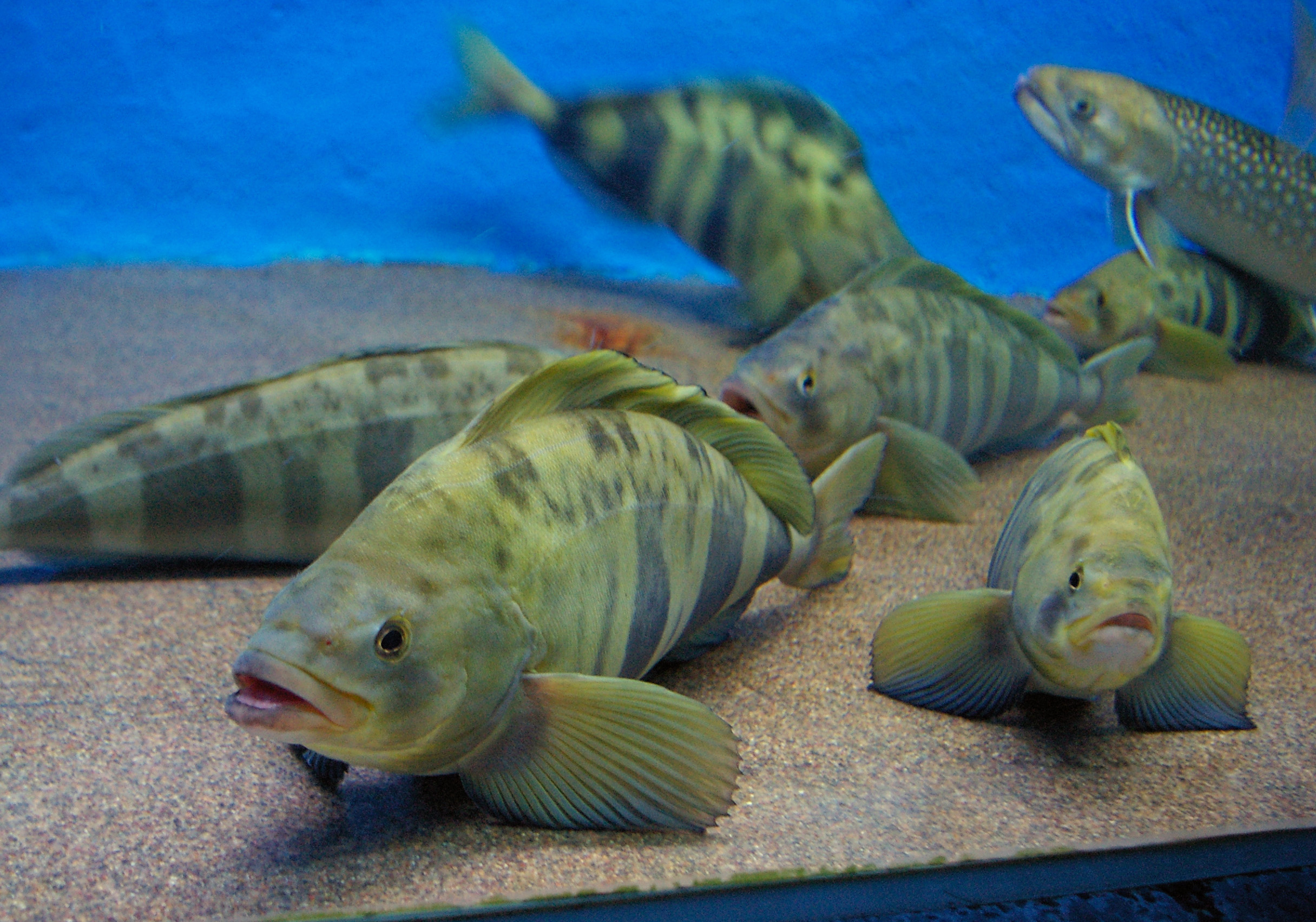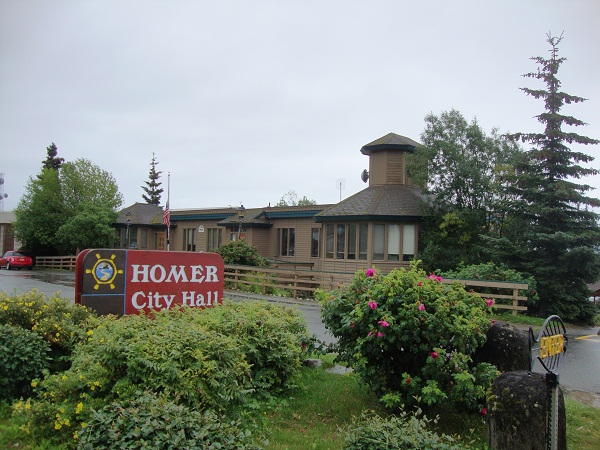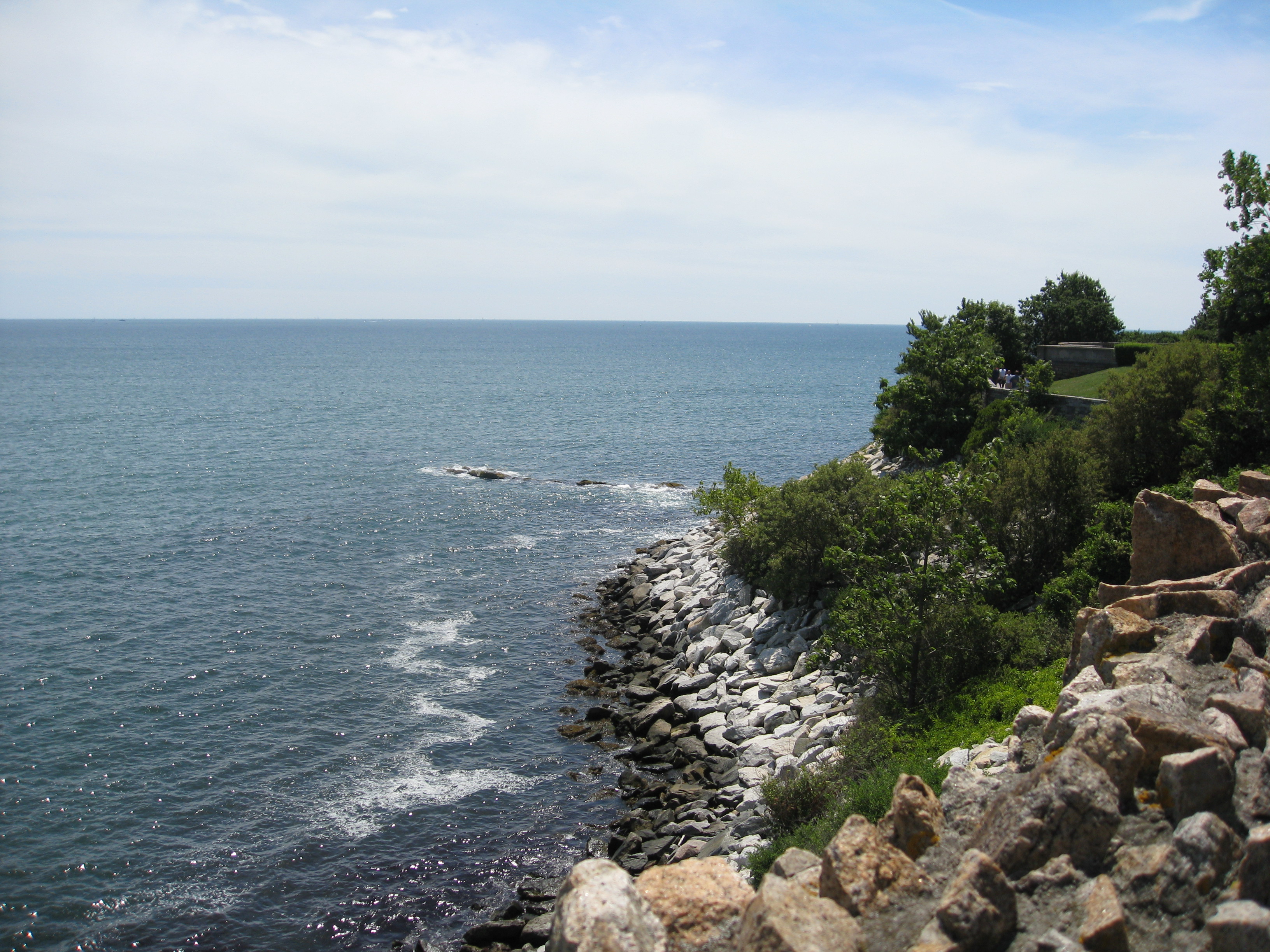|
Atka Mackerel
The Atka mackerel (''Pleurogrammus monopterygius'') is a mackerel in the family Hexagrammidae. Atka mackerel are common in the northern Pacific ocean, and are one of only two members of the genus ''Pleurogrammus'' - the other being the Arabesque greenling (''Pleurogrammus azonus''). The Atka mackerel was named for Atka Island (''Atx̂ax̂'' in Aleut), the largest island of the Andreanof islands, a branch of the Aleutians. Taxonomy The Atka mackerel was originally described under the genus ''Labrax'', but has since been moved to ''Pleurogrammus''. Both names are attributed to Peter Simon Pallas, who published his description of the fish in 1810, roughly a year before his death.*Mearns, Barbara and Richard - ''Biographies for Birdwatchers'' Atka mackerel were once considered to be synonymous with Arabesque greenlings.Nelson, J.S., 1994. Fishes of the World. Wiley, New York. The combined species would have been called the Okhotsk Atka mackerel, a name now used only for the greenl ... [...More Info...] [...Related Items...] OR: [Wikipedia] [Google] [Baidu] |
Homer, Alaska
Homer ( Dena'ina: ''Tuggeght'') is a city in Kenai Peninsula Borough in the U.S. state of Alaska. It is southwest of Anchorage. According to the 2020 Census, the population is 5,522, up from 5,003 in 2010. Long known as the " Halibut Fishing Capital of the World", Homer is also nicknamed "the end of the road", and more recently, "the cosmic hamlet by the sea". Geography Homer is located at 59°38'35" North, 151°31'33" West (59.643059, −151.525900). The only road into Homer is the Sterling Highway. Homer is on the shore of Kachemak Bay on the southwest side of the Kenai Peninsula. Its distinguishing feature is the Homer Spit, a narrow long gravel bar that extends into the bay, on which is located the Homer Harbor. Much of the coastline, as well as the Homer Spit, sank dramatically during the Good Friday earthquake in March 1964. After the earthquake, very little vegetation was able to survive on the Homer Spit. The town has a total area of , of which are land a ... [...More Info...] [...Related Items...] OR: [Wikipedia] [Google] [Baidu] |
Anal Fin
Fins are distinctive anatomical features composed of bony spines or rays protruding from the body of a fish. They are covered with skin and joined together either in a webbed fashion, as seen in most bony fish, or similar to a flipper, as seen in sharks. Apart from the tail or caudal fin, fish fins have no direct connection with the spine and are supported only by muscles. Their principal function is to help the fish swim. Fins located in different places on the fish serve different purposes such as moving forward, turning, keeping an upright position or stopping. Most fish use fins when swimming, flying fish use pectoral fins for gliding, and frogfish use them for crawling. Fins can also be used for other purposes; male sharks and mosquitofish use a modified fin to deliver sperm, thresher sharks use their caudal fin to stun prey, reef stonefish have spines in their dorsal fins that inject venom, anglerfish use the first spine of their dorsal fin like a fishing rod to ... [...More Info...] [...Related Items...] OR: [Wikipedia] [Google] [Baidu] |
Copepods
Copepods (; meaning "oar-feet") are a group of small crustaceans found in nearly every freshwater and saltwater habitat. Some species are planktonic (inhabiting sea waters), some are benthic (living on the ocean floor), a number of species have parasitic phases, and some continental species may live in limnoterrestrial habitats and other wet terrestrial places, such as swamps, under leaf fall in wet forests, bogs, springs, ephemeral ponds, and puddles, damp moss, or water-filled recesses ( phytotelmata) of plants such as bromeliads and pitcher plants. Many live underground in marine and freshwater caves, sinkholes, or stream beds. Copepods are sometimes used as biodiversity indicators. As with other crustaceans, copepods have a larval form. For copepods, the egg hatches into a nauplius form, with a head and a tail but no true thorax or abdomen. The larva molts several times until it resembles the adult and then, after more molts, achieves adult development. The nauplius form i ... [...More Info...] [...Related Items...] OR: [Wikipedia] [Google] [Baidu] |
Egg Incubation
Egg incubation is the process by which an egg, of oviparous (egg-laying) animals, develops an embryo within the egg, after the egg's formation and ovipositional release. Egg incubation is done under favorable environmental conditions, possibly by brooding and hatching the egg. Multiple and various factors are vital to the incubation of various species of animal. In many species of reptile for example, no fixed temperature is necessary, but the actual temperature determines the sex ratio of the offspring. In birds in contrast, the sex of offspring is genetically determined, but in many species a constant and particular temperature is necessary for successful incubation. Especially in poultry, the act of sitting on eggs to incubate them is called brooding. The action or behavioral tendency to sit on a clutch of eggs is also called broodiness, and most egg-laying breeds of poultry have had this behavior selectively bred out of them to increase production. Avian incubation ... [...More Info...] [...Related Items...] OR: [Wikipedia] [Google] [Baidu] |
Egg (biology)
An egg is an organic vessel grown by an animal to carry a possibly fertilized egg cell (a zygote) and to incubate from it an embryo within the egg until the embryo has become an animal fetus that can survive on its own, at which point the animal hatches. Most arthropods such as insects, vertebrates (excluding live-bearing mammals), and mollusks lay eggs, although some, such as scorpions, do not. Reptile eggs, bird eggs, and monotreme eggs are laid out of water and are surrounded by a protective shell, either flexible or inflexible. Eggs laid on land or in nests are usually kept within a warm and favorable temperature range while the embryo grows. When the embryo is adequately developed it hatches, i.e., breaks out of the egg's shell. Some embryos have a temporary egg tooth they use to crack, pip, or break the eggshell or covering. The largest recorded egg is from a whale shark and was in size. Whale shark eggs typically hatch within the mother. At and up to , ... [...More Info...] [...Related Items...] OR: [Wikipedia] [Google] [Baidu] |
Intertidal Zone
The intertidal zone, also known as the foreshore, is the area above water level at low tide and underwater at high tide (in other words, the area within the tidal range). This area can include several types of habitats with various species of life, such as seastars, sea urchins, and many species of coral with regional differences in biodiversity. Sometimes it is referred to as the '' littoral zone'' or '' seashore'', although those can be defined as a wider region. The well-known area also includes steep rocky cliffs, sandy beaches, bogs or wetlands (e.g., vast mudflats). The area can be a narrow strip, as in Pacific islands that have only a narrow tidal range, or can include many meters of shoreline where shallow beach slopes interact with high tidal excursion. The peritidal zone is similar but somewhat wider, extending from above the highest tide level to below the lowest. Organisms in the intertidal zone are adapted to an environment of harsh extremes, living in w ... [...More Info...] [...Related Items...] OR: [Wikipedia] [Google] [Baidu] |
Redondo Beach, California
Redondo Beach (Spanish for ''round'') is a coastal city in Los Angeles County, California, United States, located in the South Bay (Los Angeles County), South Bay region of the Greater Los Angeles area. It is one of three adjacent Beach Cities, beach cities along the southern portion of Santa Monica Bay. The population was 71,576 at the 2020 census, up from 66,748 at the 2010 census. Redondo Beach was originally part of the 1785 Rancho San Pedro Spain, Spanish land grant that later became the South Redondo area. The primary attractions include Redondo Beach pier, Municipal Pier and the sandy beach, popular with tourists and a variety of sports enthusiasts. The Redondo Beach station, western terminus of the C Line (Los Angeles Metro), Metro Rail C Line (formerly the Green Line) is in North Redondo Beach. History The Chowigna, California, Chowigna Indians used the site of today's Hopkins Wilderness Park, formerly Nike missile site LA-57 from 1956 to 1963, in Redondo Beach, Ca ... [...More Info...] [...Related Items...] OR: [Wikipedia] [Google] [Baidu] |
Icy Bay, Alaska
Icy Bay (Tlingit: ''Lig̲aasi Áa'') is a body of water in the borough of Yakutat, Alaska, formed in the last 100 years by the rapid retreat of the Guyot, Yahtse, and Tyndall Glaciers. It is part of the Wrangell-Saint Elias Wilderness. At the beginning of the 20th century, the bay entrance was permanently blocked by a giant tidewater glacier face that calved icebergs directly into the Gulf of Alaska. A century-long glacial retreat has opened a multi-armed bay more than long. Icy Bay is a popular destination for sea kayakers, and is reachable by bush plane from Yakutat, Alaska. 2015 landslide and megatsunami At 8:19 p.m. Alaska Daylight Time on 17 October 2015, the side of a mountain collapsed on the western end of the head of Taan Fiord, a finger of Icy Bay formed by the retreat of Tyndall Glacier. The resulting landslide generated a megatsunami in Taan Fjord. The area is uninhabited and no one was visiting it at the time, and the event went undetected for several ho ... [...More Info...] [...Related Items...] OR: [Wikipedia] [Google] [Baidu] |
Aleutian Chain
The Aleutian Islands ( ; ; ale, Unangam Tanangin, "land of the Aleuts"; possibly from the Chukchi ''aliat'', or "island")—also called the Aleut Islands, Aleutic Islands, or, before 1867, the Catherine Archipelago—are a chain of 14 main, larger volcanic islands and 55 smaller ones. Most of the Aleutian Islands belong to the U.S. state of Alaska, with the archipelago encompassing the Aleutians West Census Area and the Aleutians East Borough. The Commander Islands, located further to the west, belong to the Russian federal subject of Kamchatka Krai, of the Russian Far East. The islands form part of the Aleutian Arc of the Northern Pacific Ocean, and occupy a land area of 6,821 sq mi (17,666 km2) that extends westward roughly from the Alaskan Peninsula mainland, in the direction of the Kamchatka Peninsula; the archipelago acts as a border between the Bering Sea to the north and the Pacific Ocean to the south. Crossing longitude 180°, at which point east and west longi ... [...More Info...] [...Related Items...] OR: [Wikipedia] [Google] [Baidu] |
Bowers Bank
Bowers may refer to: Persons *Bowers (surname) Places ;Antarctica * Bowers Mountains * Bowers Piedmont Glacier ;United Kingdom * Bowers, Staffordshire, England * Bowers Gifford, Essex, England ;United States * Bowers, Delaware * Bowers, Indiana * Bowers, Pennsylvania * Bowers, Wisconsin * Bowers House (other), several structures * Bowers Museum, Santa Ana, California * Bowers Stadium, Sam Houston University, Texas Other uses * Bowers & Wilkins, a loudspeaker company in the United Kingdom * USS ''Bowers'' (DE-637) * ''Bowers v. Hardwick'', a 1986 U.S. Supreme Court decision * ''Bowers v. Kerbaugh-Empire Co.'', a 1926 U.S. Supreme Court decision * Bowers Coaches, a bus company based in the High Peak area of Derbyshire in England * Bowers' operators, a way to write large numbers * Betty Bowers, a fictional character See also * Bauer (other) Bauer is a German surname meaning "peasant" or "farmer". For notable people sharing the surname, see Bauer (surname). ... [...More Info...] [...Related Items...] OR: [Wikipedia] [Google] [Baidu] |
Stalemate Bank
Stalemate is a situation in the game of chess where the player whose turn it is to move is not in check and has no legal move. Stalemate results in a draw. During the endgame, stalemate is a resource that can enable the player with the inferior position to draw the game rather than lose. In more complex positions, stalemate is much rarer, usually taking the form of a swindle that succeeds only if the superior side is inattentive. Stalemate is also a common theme in endgame studies and other chess problems. The outcome of a stalemate was standardized as a draw in the 19th century. Before this standardization, its treatment varied widely, including being deemed a win for the stalemating player, a half-win for that player, or a loss for that player; not being permitted; and resulting in the stalemated player missing a turn. Stalemate rules vary in other games of the chess family. Etymology and usage The first recorded use of stalemate is from 1765. It is a compounding of Middl ... [...More Info...] [...Related Items...] OR: [Wikipedia] [Google] [Baidu] |


.png)




